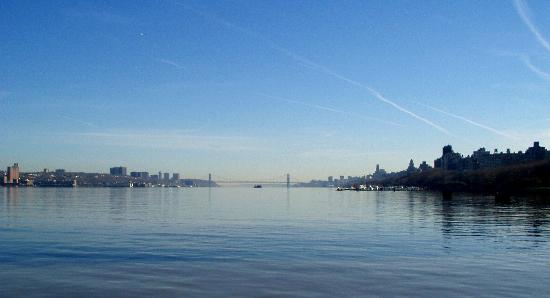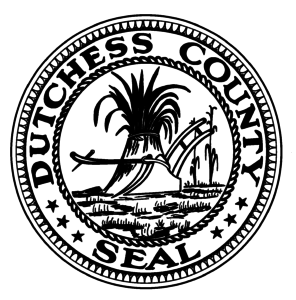
Statement from Dutchess County Executive Marcus J. Molinaro
Testimony for the Environmental Protection Agency’s Public Informational Meeting about the
Second, Five–Year Review of the project to remove toxic PCBs from the Hudson River.
At the urging of Dutchess County Executive Marcus Molinaro, state and federal elected officials and environmental organizations including Scenic Hudson, the Environmental Protection Agency is hosting a public information meeting on its second five-year review of the Hudson River PCBs Superfund site. The meeting will be held this evening from 6-8pm at the Poughkeepsie Grand Hotel.
Written comments on the EPA’s five-year review mailed or emailed to Gary Klawinski at EPA Region 2, Hudson River Office, Suite 303, 187 Wolf Road, Albany, N.Y. 12205 or at epahrfo@outlook.com.
County Executive Molinaro will offer the following comments into the formal record:
“The Hudson River, with its beautiful waterfronts, irreplaceable ecosystems, and rich history, is a tremendous asset to Dutchess County, and is part of what makes us “Distinctly Dutchess.” Since the passage of the Clean Water Act and the advent of the environmental movement born in the Hudson Valley, the Hudson River has made a tremendous comeback; and riverfront communities that once turned their backs on this polluted waterway now look to the renewed river with waterfront plans and increased access opportunities driving private and public investments. One aspect of the river’s industrial age that still holds back the Hudson’s revitalization is the PCB contamination hidden in its sediments that are being continually released into the river.
The Hudson River is an irreplaceable part of our communities. The EPA has already recognized the importance of the Hudson River as one of the first rivers designated as an American Heritage River, and it remains one of the nation’s most beautiful and historic. The American Heritage Rivers receive special attention to further three objectives: natural resource and environmental protection, economic revitalization, and historic and cultural preservation. The Hudson’s ability to achieve these objectives depends on the successful completion of the PCB cleanup, which is needed to improve the economy, health and quality of life of citizens in Dutchess County and throughout the Hudson Valley.
We join Scenic Hudson and others in expressing concerns regarding the conclusions reached in the Draft Second, Five-Year Review of the PCB removal project. Terms like “short-term protective” and “will be protective” do not ensure confidence in the report’s conclusions, especially when it details the lack of available after-dredging test data. Terms such as the project to date “is not protective” of human health and the environment or, at the least, “protectiveness cannot be determined” would be better supported by the report. The data and analysis in the review support such a designation:
• It explicitly admits the cleanup currently is not protective—that it will take more than 50 years of natural attenuation to achieve this.
• The report details the portions of this project that did not go as planned including: the discovery of significantly more PCBs than anticipated; inability to progress dredging from north to south; use of a single processing site; as well as lack of reduction in PCBs in Lower Hudson. It is also states that adequate post-dredging testing has not yet occurred to determine the impact of these deviations.
• While acknowledging the need for more data, the report predicts that decades in the future, some people in the upper Hudson will be able to eat one fish meal per month. This forecast is contradicted by expert scientists at the EPA’s sister federal agencies, the New York State Department of Environmental Conservation and the Hudson River Foundation. All maintain it will take a century or more to reach this target.
• Finally, the EPA concedes the lower Hudson section of the Superfund site has received no health or environmental benefits from the upriver dredging. This is the most concerning to all of the Dutchess County riverfront communities. To conclude the active remediation component of this Superfund site without even a clear understanding of the sources and causes of the PCB contamination in the Lower Hudson River is unthinkable.
Fulfilling the project’s federally mandated goal—and restoring the Hudson’s health—is of critical importance for sustaining Dutchess County’s $528-million tourism economy responsible for nearly 10,000 jobs. It’s also necessary for creating jobs based on a healthy river, including the resumption of the Hudson’s once-lucrative commercial fishing industry and the annual community festivals that celebrated their catch. Communities like Beacon, Poughkeepsie and Rhinebeck have made significant investments in their waterfronts to bring people and development back to the river, so it is critical these communities and the public in general understand how the future of this superfund project may or may not impact them.
The extended comment period and public informational meetings are an important step. As the EPA considers the future of this PCB cleanup project, it is vital these concerns are addressed and responded to as part of an open and transparent process.
We will never be given this opportunity again – for our generation and those that follow – do not limit the restoration of our Hudson River. Our economy, ecology, livelihoods and future depend on it.”

